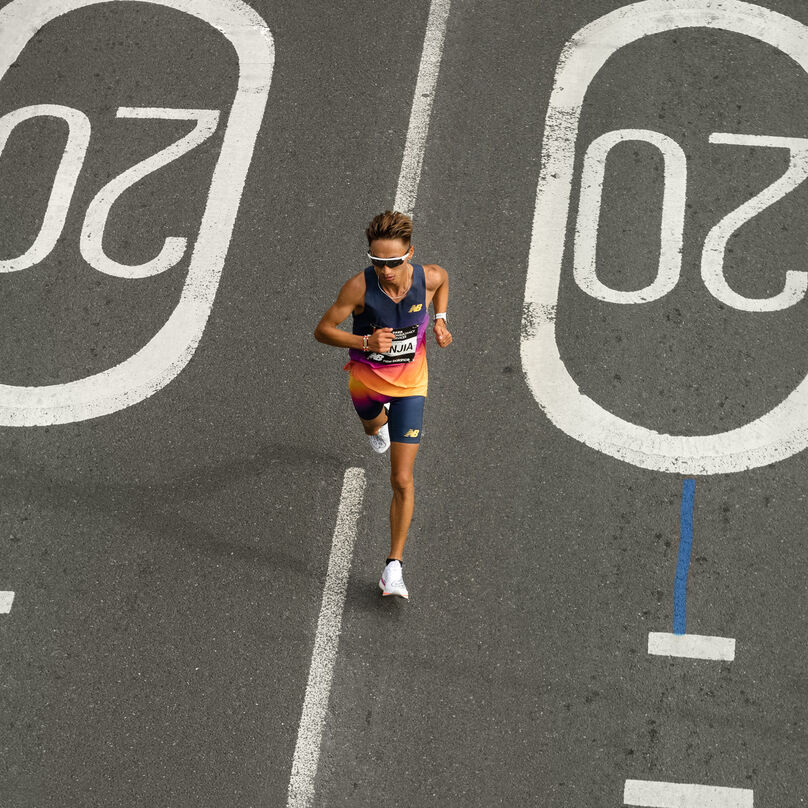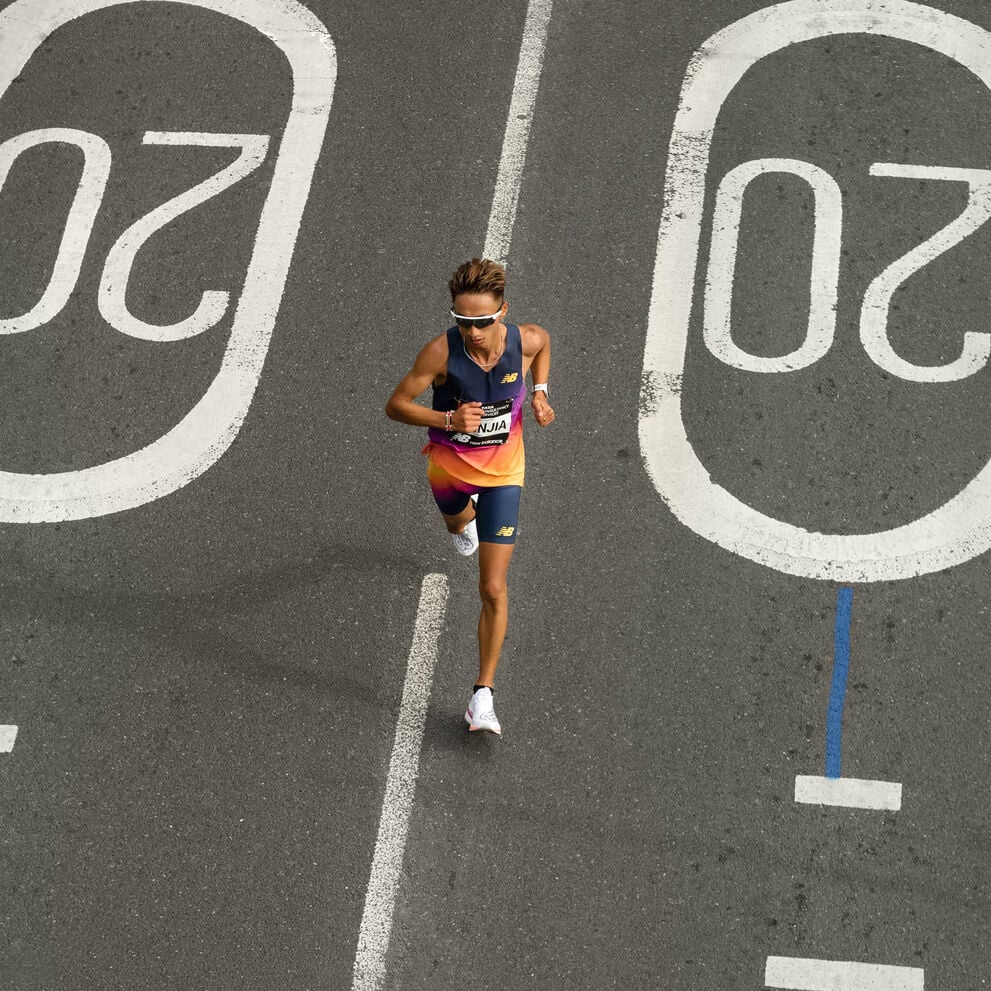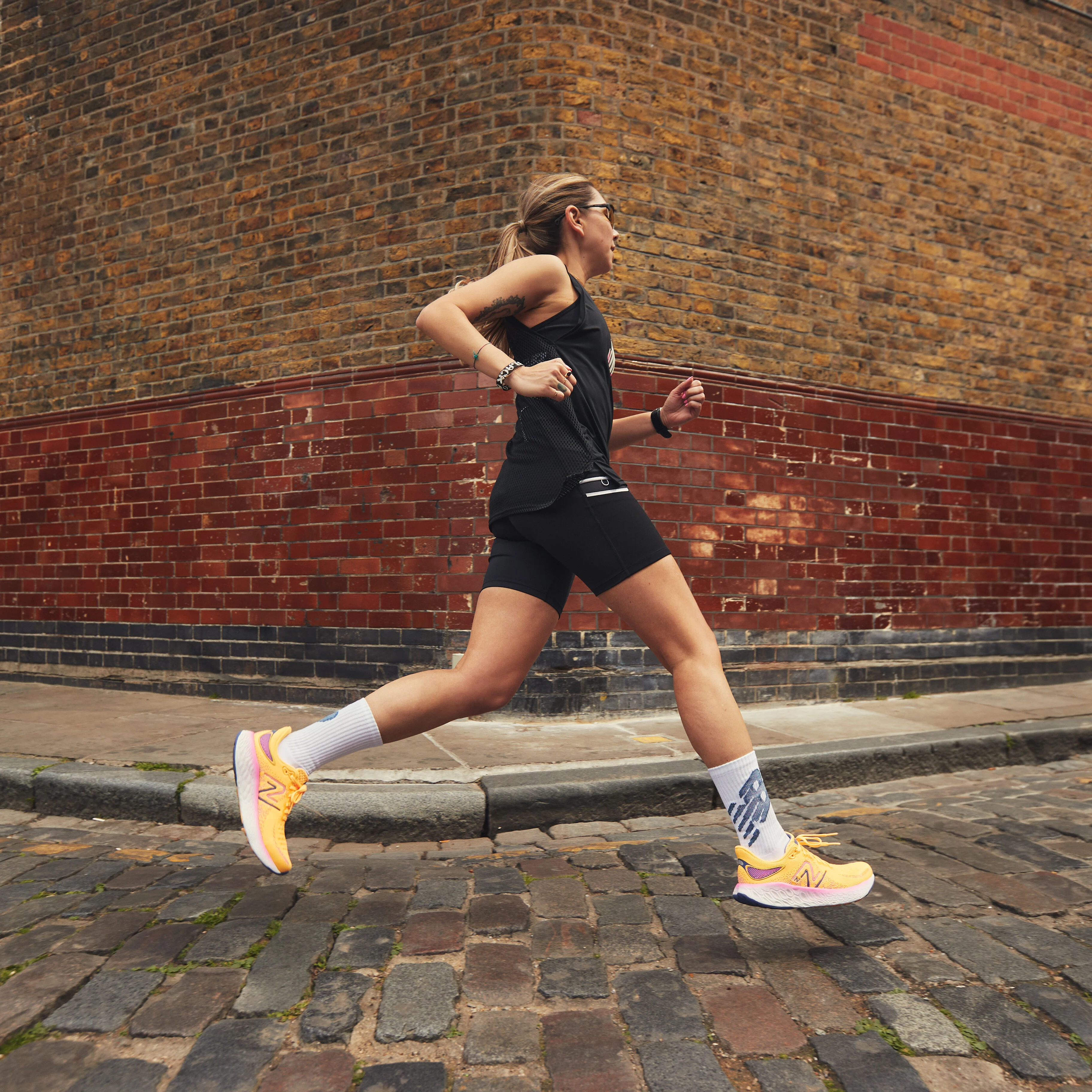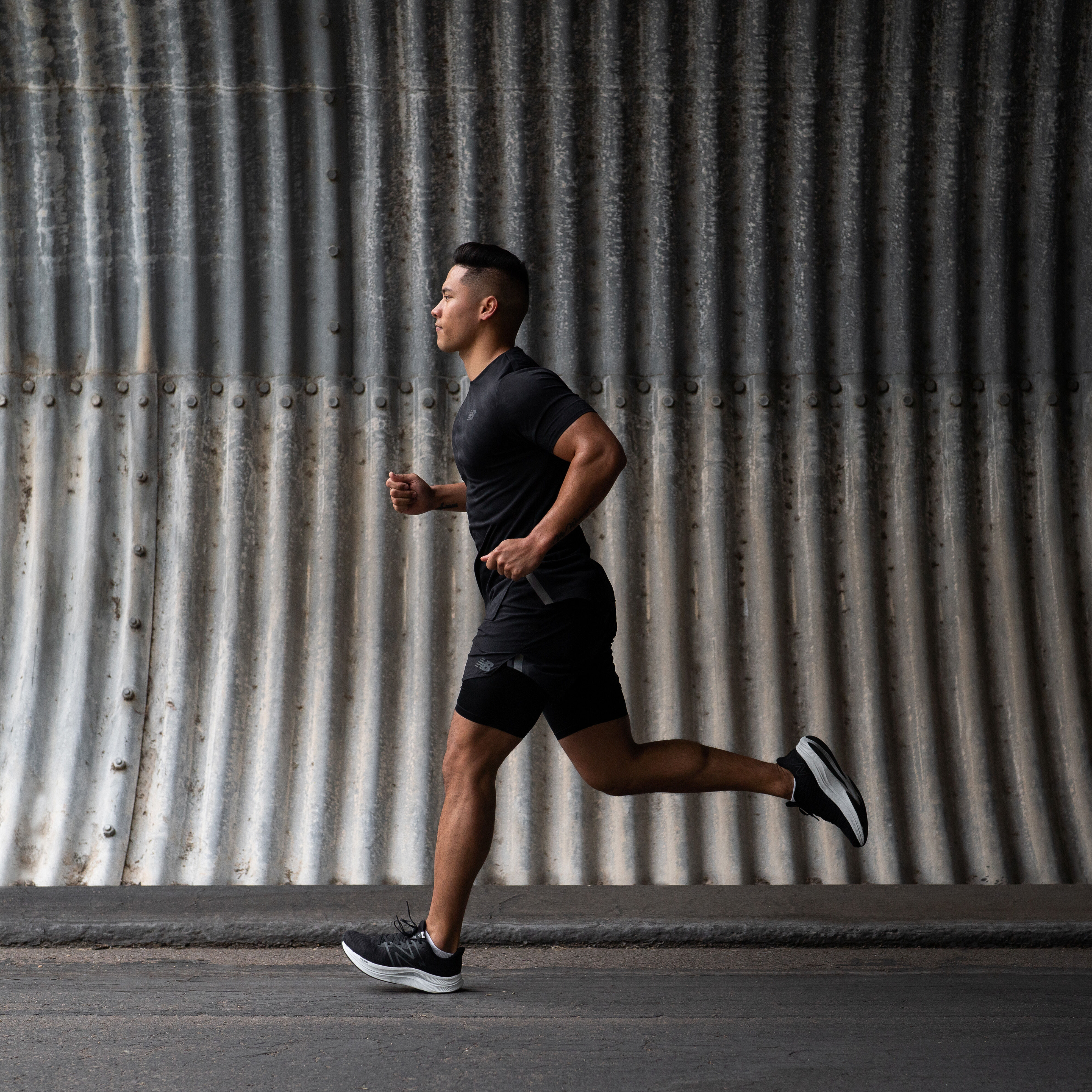-square.jpg)
How to improve running speed
Like with any workout target, to improve your running pace you’ll need to work on both your mental stamina and physical endurance. Running fast is naturally more challenging on the body, and so, mentally, you’ll need to get used to the additional discomfort this brings. Of course, there’s a difference between discomfort and pain – never power on through if you’re in actual pain.
As for physical endurance, you’ll need to work on increasing your anaerobic threshold. This is the point where your body switches from its aerobic metabolism (sustained, steady exercise) to its anaerobic
metabolism (higher intensity exercise that’s harder to sustain). The length of time we can continue to exert ourselves when our anaerobic systems are active is limited. So, the aim is to be able to run faster for longer before this kicks in.
Both the mental and physical aspects of running faster can be mastered with practice – read our tips below to find out the specifics.
Running tips for speed
Here are our top tips increasing your running speed:
Before you can run fast… you’ll need to start with the basics
It can be easy to think you need to start intense interval running straight away when it comes to improving your speed. But simply increasing the frequency of your sessions can be a good place to start.
If you’re only running once a week, for example, upping this to two or three days could naturally help you to improve your running speed and stamina. In general, you’ll gradually get better at running faster and farther the more often you run. But remember to always stick to a good training plan and don’t overdo it. It’s crucial to take rest days for both avoiding injury and allowing your strength to build.
Other basics to tick off before you start your official journey to getting faster include making sure you’ve got lightweight, well cushioned running shoes, and that you’re following a balanced diet, too. You want to give yourself the best possible chance at achieving your goals – so it pays to get everything in place before starting any official training programme.
Practice speed play & interval training
Interval training is one of the best exercises you can do to improve running speed. This is because it helps you to get fitter and faster in less time than if you were to only do steady cardio sessions. It also allows you to get used to the mental challenge of running faster, as you’ll be doing so in shorter, more
manageable bursts. So, you can train yourself over time to handle the pace without overwhelming yourself.
There are lots of different variations of interval training exercises you can do. For example, after a 15-minute warmup of dynamic drills, you could run a mile at your target race pace, then walk or jog lightly for two and a half minutes. This could be repeated two to four times.
It’s worth checking out the fartlek training method too (fartlek is a Swedish work that loosely translates to ‘speed play’). This is a type of unstructured speedwork where you play around with running pace and intensity in a more fluid way. With fartlek training, you speed up and slow down your running, but you never walk or stop, which makes it a bit different to interval training.
Add some tempo runs to your training
A tempo run is where you run at a sustained effort continuously – you’ll want to aim for at least 20 minutes. Or, even better, around 45-60 minutes. It’s a type of speedwork, as it involves running at a ‘comfortably hard’ pace – in other words, faster than the pace you could sustain for hours, but not so fast that you can’t sustain it for at least 20 minutes. Effort wise, you’ll probably want to be giving it around a 6-8 out of 10.
Tempo runs are one of the best exercises to increase running speed you can do, as they help to increase your anaerobic threshold. They’re different to other types of speedwork because you don’t run faster in intervals with breaks in-between. The aim is to run continuously at a fast(ish) pace for a block of time. Aiming to incorporate one tempo session a week into your schedule should make a notable difference to your speed.




Add some sprint workouts for speed to your training
Sprint workouts are a great way to improve your speed, and can be pretty fun too. Try sprinting at 90 percent effort level for 30 seconds, then walking or jogging for 90 seconds – repeated around eight to 12 times.
Work on your stride turnover
Your stride turnover is how many times your feet hit the ground per minute during a run. Using this as a way to measure and increase your speed can be really effective – simply run at your normal pace for 30 seconds then jog lightly for 30 seconds, then run again, this time aiming to increase your stride turnover slightly. Repeat this exercise a few times.
Work on your running form
Getting faster at running isn’t all about speedwork. It can also help you to work on your form, to make sure you’re running in an optimal way. Perfecting your gait and posture should make running feel generally easier, making it more likely that you’ll be able to go faster.
Build your overall strength
The stronger your muscles are, the more power you have to propel yourself forwards. Doing core-strengthening exercises can be particularly useful when it comes to improving your running speed, because stronger abdominal muscles mean your leg muscles are freed up and can work that bit harder. This also helps to improve your breathing while you’re running – a win-win. Core strengthening exercises to try includes planks, bicycle crunches, abdominal curls and basic bridges.
Take rest – schedule in recovery time
No training programme is complete without adequate rest and recovery time scheduled in.
Make sure you’re having at least one recovery day a week, and aim to get good quality sleep each night, too. A recovery day could involve doing no exercise at all or doing something super light and easy. Listen to your body and do what feels best for you when your recovery days roll around.
It’s worth noting that even with rest days, you might still get some delayed onset muscle soreness (or DOMS) as you increase the intensity of your training. This is normal – and is actually a positive sign that your muscles are becoming stronger!
How to run a fast 5k
A combination of the running tips and exercises above should help you improve your 5k time. But some extra tips for setting your personal 5k best include:
• Set yourself manageable goals – if your time is currently 28 minutes, aim to get it down to 27 over the course of six weeks (that’s 10 seconds faster a week). Failing your goals can be disheartening, so it’s best to start small and take things from there.
• Run more – the more you run, the more fit and efficient your body gets. Just remember to follow a decent training plan and schedule in enough recovery time.
• Treat your running warm up as sacred – a competitive 5k requires you to start out fast and then get faster. So, a good warm up (or lack of one) could literally make or break the race for you.
How fast can a human run
The fastest a human has ever run is 27.78mph – a record set by Usain Bolt back in 2009, when he ran 100 metres in just 9.58 seconds. Some scientists say that, theoretically, the human frame could handle running speeds of up to 40mph – but so far no one’s come close to that.
Florence Griffith-Joyner holds the record for the fast woman and has done for over 30 years – since she ran 100 metres in 10.49 seconds in 1988.
Impressive.
Fast running – closing thoughts
If you’re wondering why you can’t run faster, you’re probably trying to achieve too much at once. It doesn’t matter if it’s for a short distance run, mid distance run or long distance run – improving your speed takes time and practice. There’s no singular technique that will help you to run faster; it’s all about playing the long game and making gradual improvements over time. Speed drills and tempo runs will be your best friend, while strengthening exercises, good quality sleep, and a balanced diet should help you go the extra mile. Good luck!

-square.jpg)

